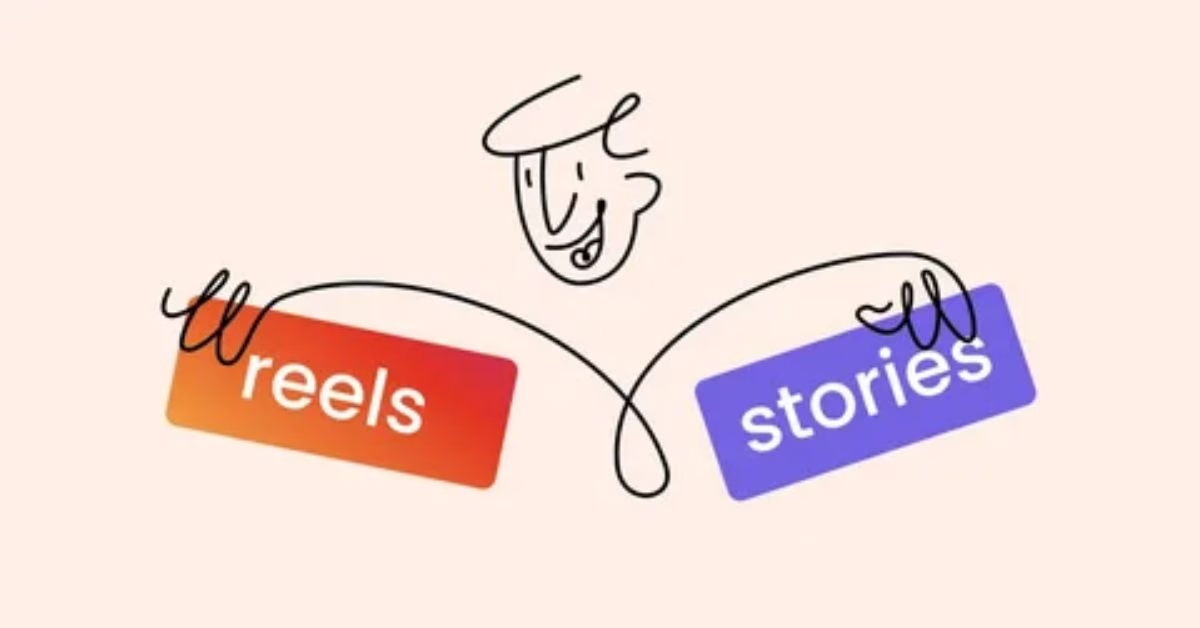Introduction
In 2025, Instagram remains one of the most powerful platforms for businesses to connect with audiences, build brand awareness, and drive conversions. Among its features, Stories and Reels stand out as the formats with highest engagement, greatest reach potential, and deeper audience connection. Yet many brands underutilize them or treat them like an afterthought.
This guide will walk you through everything you need to know to use Instagram Stories and Reels effectively for business: setting up, content strategy, analytics, tools, advanced tactics, plus real case studies. The goal is to help you create a sustainable, high-impact Instagram content engine.
First, let’s understand what exactly Stories and Reels are, and why they matter now more than ever.
What are Instagram Stories and Reels
Instagram Stories
- Introduced in 2016, Stories are ephemeral content (images or short videos) that disappear after 24 hours (unless saved as Highlights).
- They appear at the top of the Instagram app, and can include stickers, polls, quizzes, links (via link sticker), music, text overlays, tagging, and more.
- They are ideal for behind-the-scenes, real-time content, quick updates, announcements, promotions, or audience engagement via interactive stickers.
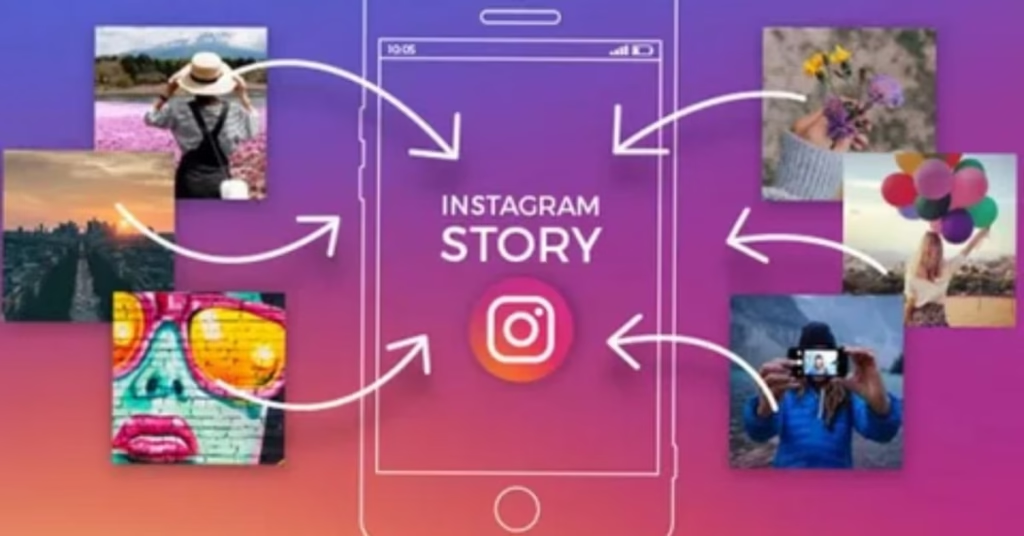
Instagram Reels
- Introduced in 2020, Reels are short-form vertical videos (often 15 to 90 seconds, sometimes up to 3 minutes for discoverability) combining video clips, transitions, audio, effects, and text.
- They show up in the Reels tab, the Explore page, and users’ feeds, reaching beyond your existing followers.
- The format is optimized for discovery, entertainment, and virality.
Latest statistics on their usage and engagement
Here are some of the most up-to-date statistics (2024–2025) that show the significance and growth trends of Stories and Reels:
- Instagram has crossed 3 billion monthly active users (as of late 2025).
- Over 500 million people use Stories every day across Instagram (and related platforms).
- There are 4 million advertisers currently using Stories.
- Reels reach 726.8 million users and deliver 1.36× more reach than carousels.
- Reels receive 22% more interaction than standard video posts.
- Reels are reshared more than 4.5 billion times per day.
- Instagram’s Reels ads reach 11.6% of the global adult population.
- In general, engagement across Instagram is under pressure; average engagement rates across content types are dropping, with Reels often outperforming static posts.
These numbers make one thing clear: investing in Stories and Reels is not optional—it’s critical for businesses seeking visibility, growth, and conversions today.
Why they matter for businesses
- Reach and discoverability
Reels are prioritized by Instagram’s algorithm for discovery: they are shown to non-followers via the Explore tab, Reels feed, and keyword / hashtags. This makes them powerful tools to reach new audiences. - High engagement potential
Because of their dynamic, visual, and often entertaining format, Reels and interactive Stories tend to get better engagement (likes, comments, shares, swipe-ups) compared to static posts. - Versatile content funneling
You can use Reels as “top of funnel” (to attract and build awareness) and Stories as “mid-to-lower funnel” (to nurture, persuade, and convert). Many campaigns pair Reels for reach, then Stories for deeper storytelling, directions, or calls-to-action. - Humanizing your brand
Stories allow informal, authentic content—behind-the-scenes, day-in-the-life, direct messages—which builds connection and trust with followers. - Monetization and commerce features
Instagram now supports shopping stickers, product tags, link stickers, checkout, etc., which can be integrated in Stories and Reels to drive sales directly. - Algorithmic prioritization
Instagram is doubling down on video formats (especially Reels). The app’s emerging designs (e.g. new iPad app opening directly to Reels) emphasize short-form content.
Thus, a smart strategy must incorporate both formats in a complementary way.
Instagram Stories for Business
Setting up Instagram Stories for business accounts
- Switch to a Business or Creator account
You’ll need this to access Insights, promotions, swipe-up/link sticker features, and other advanced options. - Enable story features
Ensure your account has the link sticker enabled (this is now available to more users than previously), music, polls, quizzes, and product tags (if in eligible regions). - Create a branded style
Develop a consistent look & feel (fonts, colors, sticker styles) so that users instantly recognize your stories as yours. - Plan for Highlights
Save key stories into Highlights (permanent tabs on your profile) so that new visitors can see important content (e.g. “About Us,” “Products,” “Testimonials”).
Key features and how to use them effectively
| Feature | Use Case / Tips |
| Link Sticker | Direct traffic to a webpage, product, blog post, landing page. Put a clear call-to-action (CTA). |
| Poll / Quiz / Question Sticker | Invite engagement, gather feedback, conduct polls. Great for audience input. |
| Countdown Sticker | Use for product launches, events, sales — builds anticipation. |
| Product Tags / Shopping Stickers | Tag products directly so users can click to view / buy. |
| Mentions / Hashtags / Location Tags | Expand reach; help your Story appear under those tags’ Story reels. |
| DM / Chat stickers | Invite followers to send messages, create more direct connection. |
| Boomerang, Superzoom, Effects, AR Filters | Use creative tools to make content more dynamic and fun. |
| Swipe-up / See More (if eligible) | Legacy but now replaced by “Link Sticker” approach for broader access. |
Use a mix of these features to keep your Stories interactive and engaging.
Stories analytics and measurement
Within the Instagram Insights section (Stories tab), you’ll see metrics such as:
- Impressions (how many times seen)
- Reach (unique accounts)
- Taps forward / backward (skips or replays)
- Replies (DMs)
- Exits (people leaving the story)
- Swipe-up clicks (if link sticker used)
- Shares (if Story was shared)
To analyze performance:
- Calculate completion rate = (Number of taps forward + exits) relative to total impressions
- Compare reply rates or swipe-ups by day or content type
- Identify what content causes high drop-off (high exits)
- Use A/B testing on content (e.g. version A with poll sticker vs version B without)
Best practices for business storytelling
- Start with a hook: the first Story screen should capture attention
- Keep each Story sequence short (3–7 slides) to avoid fatigue
- Mix media types: image, video, boomerang
- Use consistency in aesthetics (fonts, colors, branding)
- Use captions / text overlays (many view without sound)
- Encourage engagement via questions, polls, “swipe up,” or CTAs
- Leverage user-generated content or testimonials
- Use storytelling narrative arcs (problem → solution → outcome)
- Post at times when your audience is active
- Repurpose your best Reels clips into Stories snippets
- Save best-performing stories into Highlights
Case studies: Successful business Stories campaigns
- Glossier (cosmetics brand): uses Instagram Stories to preview new products, run polls (ask audience which shade they prefer), build hype with countdown stickers before launches, and then tag product links directly in Stories.
- Airbnb: used Stories to show behind-the-scenes of select experiences and local hosts, prompting visitation and booking.
- Nike: often does account takeovers via athletes in Stories, letting them share daily routines, Q&A sessions, etc.
These examples show how Stories can blend promotional content with authentic storytelling.
Instagram Reels for Business
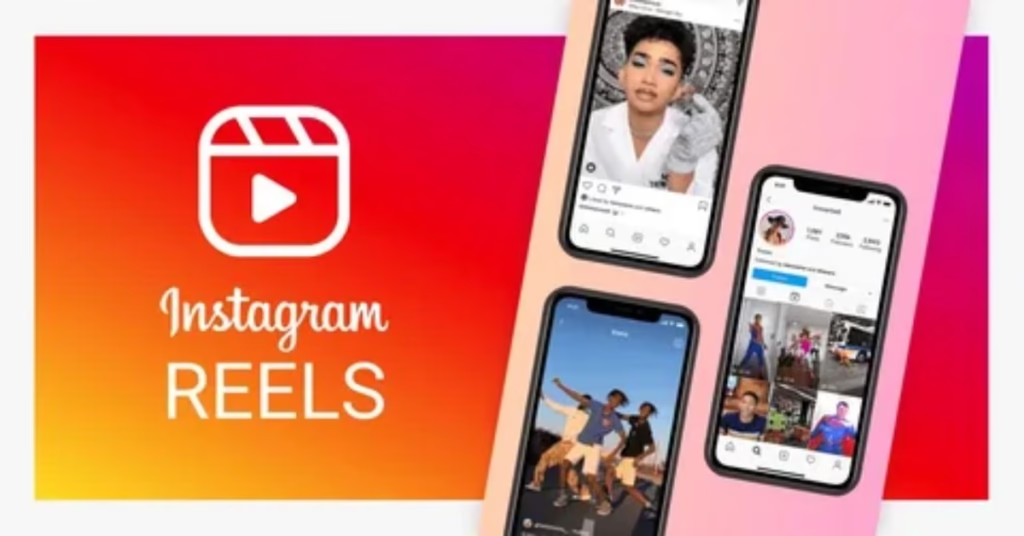
Creating your first business Reel
- Open the Instagram camera & select “Reels” mode
- Choose audio (music, original sound, voiceover)
- Record clips (15–60 seconds, though < 90s is optimal for discovery)
- Add effects, transitions, AR filters, text overlays
- Use align tool for seamless transitions
- Add captions, stickers, hashtags, and cover image
- Use a compelling hook in first 1–3 seconds
- Post to feed, Reels tab, and optionally share to Stories
- Optionally promote as Reel ad
Reels features that drive engagement
- Audio / Original sound — using trending sound often boosts reach
- Captions / on-screen text — most users watch without sound
- Transitions, jump cuts, speed changes — maintain dynamism
- Stickers, effects, AR filters — enhance visual appeal
- Hashtags, keywords — help in discovery
- Overlay CTAs / end screens — prompt action
- Green screen, duet / remix formats — encourage creative formats
Reels algorithm insights
Understanding how Instagram prioritizes Reels helps you optimize:
- Instagram favors Reels that retain viewers (i.e. low drop-off)
- Reels that are engaging (likes, comments, shares, saves) get more weight
- Use trending audio early — the platform often boosts Reels using trending sounds
- Timeliness matters — newer content often gets a temporary boost
- Consistency helps: frequent posting trains algorithm
- Watch completion rate — if many drop off early, Instagram may de-prioritize the content
- The algorithm considers relevance signals (user history, interests) and video information (audio, visuals, captions)
- Instagram’s new embedding of advanced user representation (e.g. DV365 model) suggests long-term user behavior is also considered in recommendation systems.
Best practices for business Reels
- Start with a strong hook (first 1–3 seconds)
- Keep Reels shorter (<30 seconds) for better retention
- Use trending audio but personalize it
- Use captions / on-screen text for silent viewers
- Post regularly (e.g. 3 to 5 Reels per week)
- Repurpose content across platforms (TikTok, YouTube Shorts)
- Engage in comments quickly — early engagement helps algorithm
- Use hooks, teasers, and storytelling arcs
- Use clear CTAs (e.g. “Follow for more,” “Check link in bio,” or “Swipe up” if eligible)
- Review your top-performing Reels and iterate
- Collaborate with other creators or brands
- Use tools to plan and edit (see next section)
Case studies: Successful business Reels campaigns
- Deepika Padukone / Hilton: a promotional reel that reached ~1.9 billion views, combining celebrity, high production, and shareability.
- Cosmetic brands: many beauty brands use “before vs after” Reels, product comparisons, tutorials, and transitions to showcase products dynamically.
- Fitness influencers / gyms: use Reels to show workout snippets, transformations, fitness tips—often converting viewers to clients or class participants.
- Local restaurants: posting quick recipe, plating, or behind-the-scenes kitchen stories as Reels to attract food-lovers and convert into visits or orders.
Stories vs. Reels: Strategic Differences
When to use Stories vs. Reels
| Scenario | Use Stories | Use Reels |
| Nurturing existing followers | ✅ | |
| Quick updates, announcements, polls | ✅ | |
| Behind-the-scenes, daily content | ✅ | Occasionally |
| Reaching new audiences / discovery | ✅ | |
| Evergreen, “always-on” content | ✅ | |
| Driving conversions, swipe-up links | ✅ (with link sticker) | ✅ (via CTA) |
| Content with multiple parts (series) | ✅ | Can also be done with parts |
| Real-time / live feel | ✅ | Less real-time, more produced |
In short: use Reels to attract and Stories to nurture and convert.
Content types that perform best on each
Stories:
- Polls, Q&A, quizzes
- Countdown, launch teasers
- Behind-the-scenes and “day in life”
- User-generated content shout-outs
- Short product demos
- Swipe-up / link-based CTAs
- Direct interactions (DMs)
Reels:
- Tutorials / how-tos
- Before-after transformations
- Transitions / effects-based content
- Sound-driven content (lip-sync, trending audio)
- “Challenges,” duets/remixes
- Quick tips / hacks
- Entertaining or surprising content
- Product reveals / unboxing
Engagement differences and expectations
- Reels tend to get higher reach and discovery but sometimes lower per-user engagement compared to Stories among existing audience
- Stories get more direct responses (DMs, replies) since they’re more personal
- Reels generate shares and saves, which help algorithmic boost
- Expect higher drop-off in Reels if hook is weak
- Engagement rates: Reels generally outperform static posts, but performance depends on niche, quality, and timing
Combining Stories and Reels in your strategy
A good content loop might look like:
- Post a Reel to reach new users
- Share teaser or clip of that Reel in your Stories
- Use a poll or question sticker to ask opinions / feedback
- Create a highlight from the Reel series
- Use Stories to drive traffic (link sticker, swipe-up) to blog, product, etc.
- Repurpose your Stories into short Reels or compile them
This synergy helps you stretch content, reinforce messaging, and maximize ROI.
Content Planning and Ideas
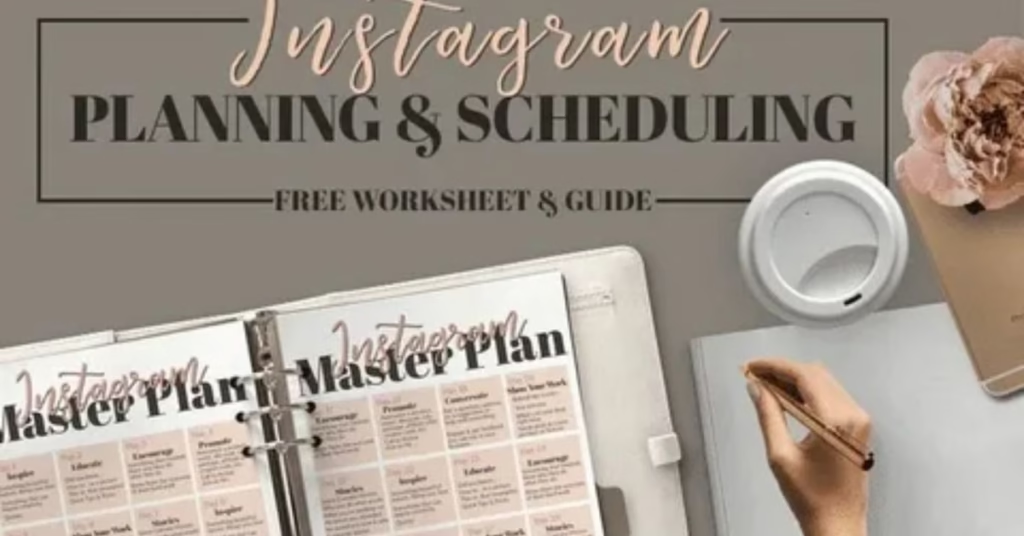
Content calendar for Stories and Reels
Create a weekly or monthly content calendar that balances:
- Reels: 3–5 per week
- Stories: daily or near-daily (5–10 slides per day)
- Themes: educational, entertainment, promotional, behind-scenes, testimonials
- Align with product launches, seasonal promotions, trending days (holidays, events)
- Reserve “spontaneous” slots in Stories for reactive content
25 Story ideas for businesses
- Poll: Which product do you prefer?
- Quiz: Guess this product’s feature
- Behind-the-scenes of your workspace
- Meet the team — short intros
- Sneak peek of upcoming product
- Customer testimonial screenshot or video
- Unboxing or packaging process
- Day in the life (CEO / founder)
- Live Q&A / AMA
- Countdown to product launch
- Before / after comparison
- Share user-generated content / reviews
- Ask a question (use Question sticker)
- Quick tip or hack
- Flash sale announcement
- Poll or slider (“How much do you like this?”)
- “This or That” (two options)
- Feature highlight (product benefit)
- Re-share a popular Reel
- Tutorial / mini demo
- Show your workspace or studio
- Share a quote / brand value
- Share a milestone or achievement
- Sneak peek of your day (meal, travel, etc.)
- Seasonal / holiday greetings
25 Reel ideas for businesses
- Product demo with transitions
- “Before → After” transformation
- Quick 3–5 tips or hacks
- Tutorial (e.g. how to use product)
- Meet the founder clip
- Customer review/testimonial
- Time-lapse (e.g. making something)
- Trend-driven sound challenge
- Duet / remix with customer content
- Unboxing
- Sneak peek of upcoming release
- “Day in the life” condensed
- Behind-the-scenes look
- FAQ answered in fun way
- Stop-motion / animation style
- Recipe / process in your niche
- Product comparison
- Tip + CTA at end
- Montage / slideshow with music
- Office / store tour
- Seasonal / holiday theme
- Before-after of space / makeover
- POV / first-person style
- User-generated montage
- Repurpose blog or webinar snippet
Seasonal and trending content opportunities
- Plan around holidays (Eid, Ramadan, New Year, Black Friday)
- Use trending audios, hashtags, challenges
- Align with awareness dates (Earth Day, Mental Health Day)
- Use cultural events or festivals in your region
- Monitor Instagram’s “Explore” or “For You” tabs to sense trending formats
Technical Guide and Tools
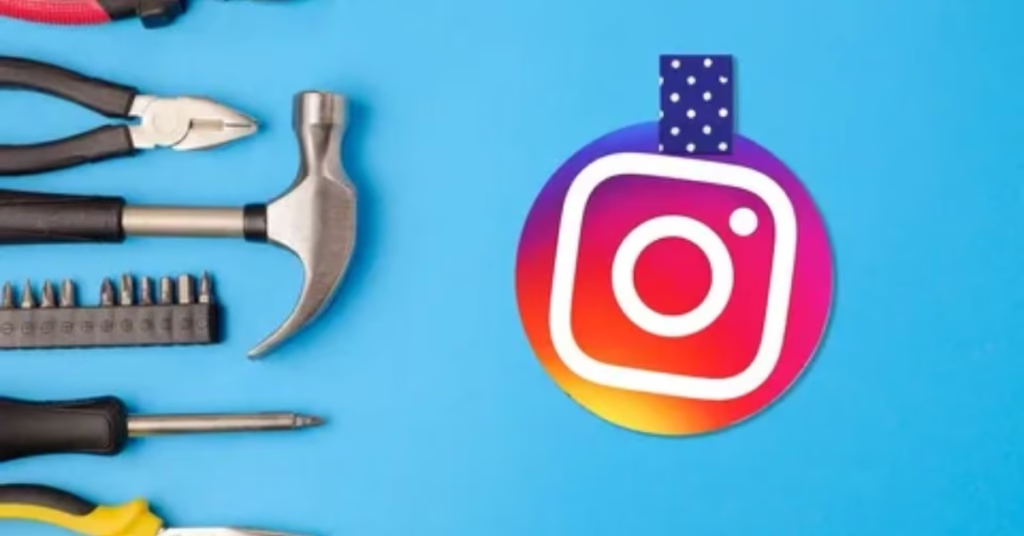
Best apps and tools for creation
- Canva / Adobe Express — templates for Stories / Reels
- InShot / CapCut / VN / KineMaster — mobile video editors
- Spark AR Studio — create custom AR filters
- Later, Buffer, Planoly — scheduling, planning, visual grid
- Unfold / StoryArt — Story layout & design
- Metricool / Iconosquare / Socialinsider — analytics & reporting
- PicsArt / Over — creative overlays, effects
- Easil / Mojo — animated templates
Step-by-step creation tutorials (example for a Reel)
- Open Instagram → “+” → Reel
- Tap “Audio” → choose trending sound
- Tap “Length” → choose 15 / 30 / 60 s
- Record first clip (2–3s)
- Use “Align” tool → record second clip, etc.
- Add effects, speed adjustments
- Tap “Preview” → add text overlays/stickers / filters
- Tap “Next” → write caption, hashtags, cover image
- Post; optionally share to Stories
For Stories: open Stories camera, capture or upload image/video, add stickers/text, then post.
Templates and resources
- Use Canva or other editors with ready-made Story / Reel templates
- Download royalty-free audio (Instagram library, Epidemic Sound, etc.)
- Use free stock photo / video archives (Pexels, Unsplash)
- Maintain a brand assets folder (logos, colors, fonts)
- Collect trending audio or hashtag lists weekly
Scheduling and management tools
- Later: supports Reel scheduling, best times, analytics
- Buffer / Planoly: plan Stories, posts, Reels
- Hootsuite: integrates Instagram content planning
- Meta Business Suite / Creator Studio: native scheduling
- Sprout Social: advanced analytics + planning
Measuring Success
Key metrics to track
Stories metrics:
- Impressions
- Reach
- Taps forward / backward
- Exits
- Replies / DMs
- Swipe-ups / link clicks
- Shares
Reels metrics:
- Plays / Views
- Likes, Comments, Shares, Saves
- Completion Rate / Drop-off point
- Reach / Impressions
- Profile visits generated
- Follower growth after posting
- Link clicks (if CTA)
Setting realistic goals
- Use benchmarks: e.g. aim for 1–2% engagement rate for Reels in niche
- Start with smaller goals (e.g. get 1,000 plays in first month)
- Project growth (e.g. +10% reach per month)
- Use SMART goals (Specific, Measurable, Achievable, Relevant, Time-bound)
A/B testing strategies
- Test different hooks (text vs no text)
- Test different lengths (15s vs 30s)
- Try different audio vs non-audio
- Experiment with CTAs (text CTA vs spoken CTA)
- Compare performance by day/posting time
- Test variation in stickers/interactivity
ROI calculation methods
To measure return on investment (ROI):
- Define objective (e.g., increase sales, leads, website visits)
- Track conversions attributable to Stories / Reels (via UTM links, landing pages)
- Calculate cost (man-hours, tools, ad spend)
- Use formula:
[
\text{ROI} = \frac{\text{Revenue from campaign} – \text{Cost}}{\text{Cost}} \times 100%
] - Compare cost per acquisition (CPA) vs other channels
- Monitor long-term impact (new followers, increased brand awareness, repeat customers)
Advanced Strategies
Advertising with Stories and Reels
- Use Stories Ads (full-screen, 5–15 s) with link CTA
- Use Reels Ads inserted into Reels feed (up to 30s with compelling creative)
- Use A/B test creative variations
- Use retargeting (people who watched Stories or Reels but didn’t convert)
- Use lookalike audiences derived from engagers
- Promote your top-performing organically created Stories / Reels
Influencer collaborations
- Partner with micro / macro influencers for takeovers, Reels collaborations, dual content
- Use affiliate codes or links in their Reels / Stories
- Repost influencer-created content in your Stories / Reels
- Run joint challenges / user-generated-content (UGC) campaigns
Cross-promotion techniques
- Share Reels on Facebook / TikTok / YouTube Shorts
- Promote new Reels via Stories
- Embed Stories or Reels on your website
- Include links to your Instagram in email newsletters
- Collaborate with other brands and tag cross-audiences
- Use Instagram feed posts to tease Reels
Integrating with broader marketing efforts
- Connect Reels/Stories with blog posts, product launches, webinars
- Use them as teaser trailers for longer-form content
- Align with campaigns (holiday promotions, launches)
- Add UTM-tagged links to Stories / Reels CTAs
- Use insights from Reels / Stories to inform broader social / content strategy
FAQs
- How long should an Instagram Reel be for maximum reach?
For optimal discoverability, Reels under 90 seconds are recommended; shorter (15–30 s) Reels often get better retention and thus algorithmic boost.
- Can all businesses use link stickers in Stories?
Yes — Instagram has rolled out the link sticker more broadly (beyond just accounts with 10,000+ followers).
- Which is better: Stories or Reels for conversion?
It depends on your funnel: Reels excel at awareness and reach; Stories are better for nurturing, direct engagement, and conversion (swipe-up / link sticker).
- How often should I post Reels and Stories?
Stories: ideally daily. Reels: at least 3–5 times per week (or more if capacity allows). Consistency is key.
Conclusion
Instagram Stories and Reels are not just trendy features—they are essential tools for businesses to grow awareness, deepen connections, and drive conversions in 2025. When used strategically, they complement each other: Reels for wide discovery, Stories for nurturing and conversion.
The keys to success include:
- Planning content with a consistent cadence
- Leveraging hooks, interactive stickers, and CTAs
- Monitoring analytics and iterating based on data
- Integrating with paid ads, influencer strategies, and broader campaigns
- Using the right tools to streamline creation and scheduling
If you consistently produce authentic, high-quality content, test what works, and stay up to date with evolving algorithm changes, your Instagram Stories + Reels engine will deliver real business impact. For more tech tips and app reviews, check out Fletchapp.com to stay ahead in the world of technology!Follow us on Instagram and Twitter/X!

